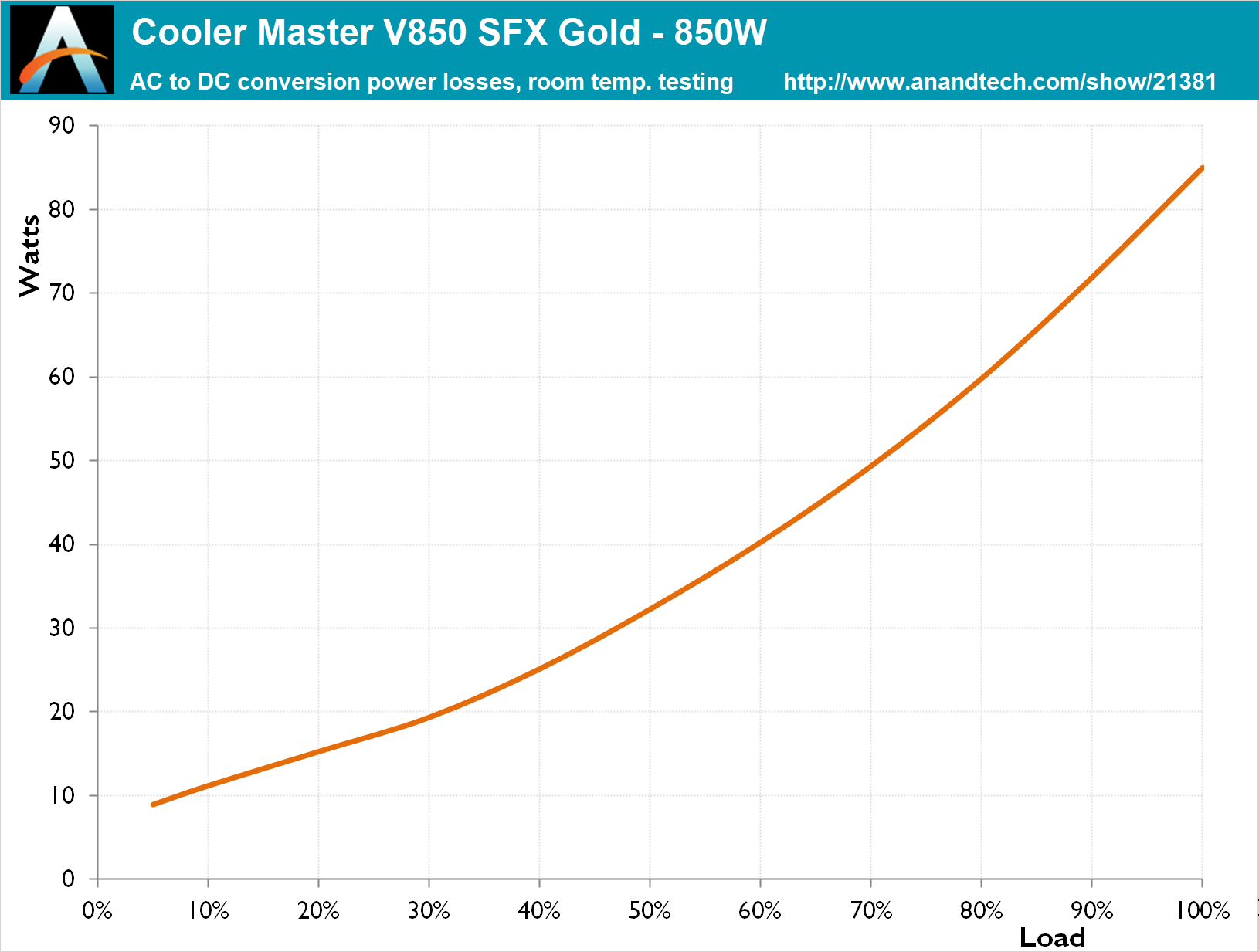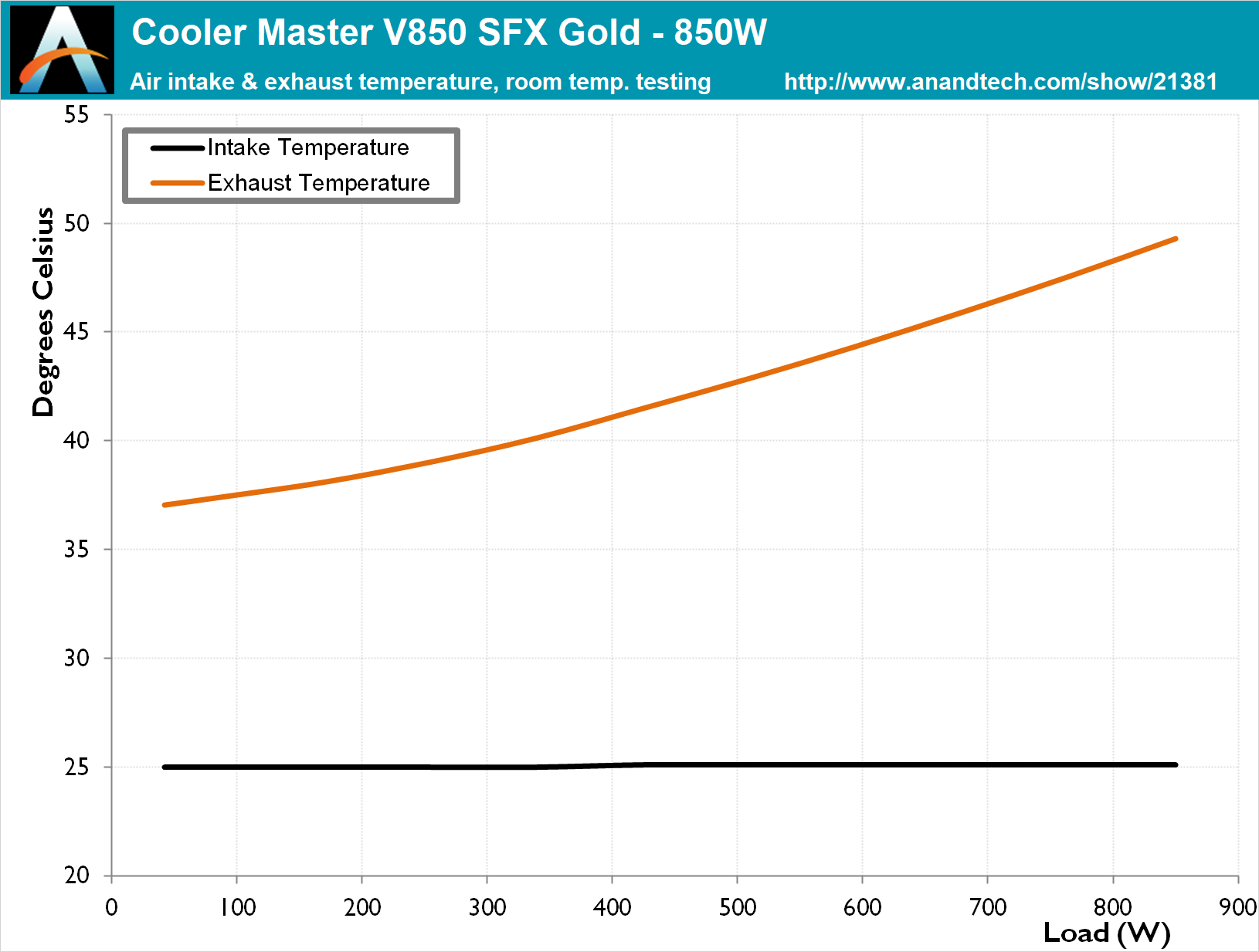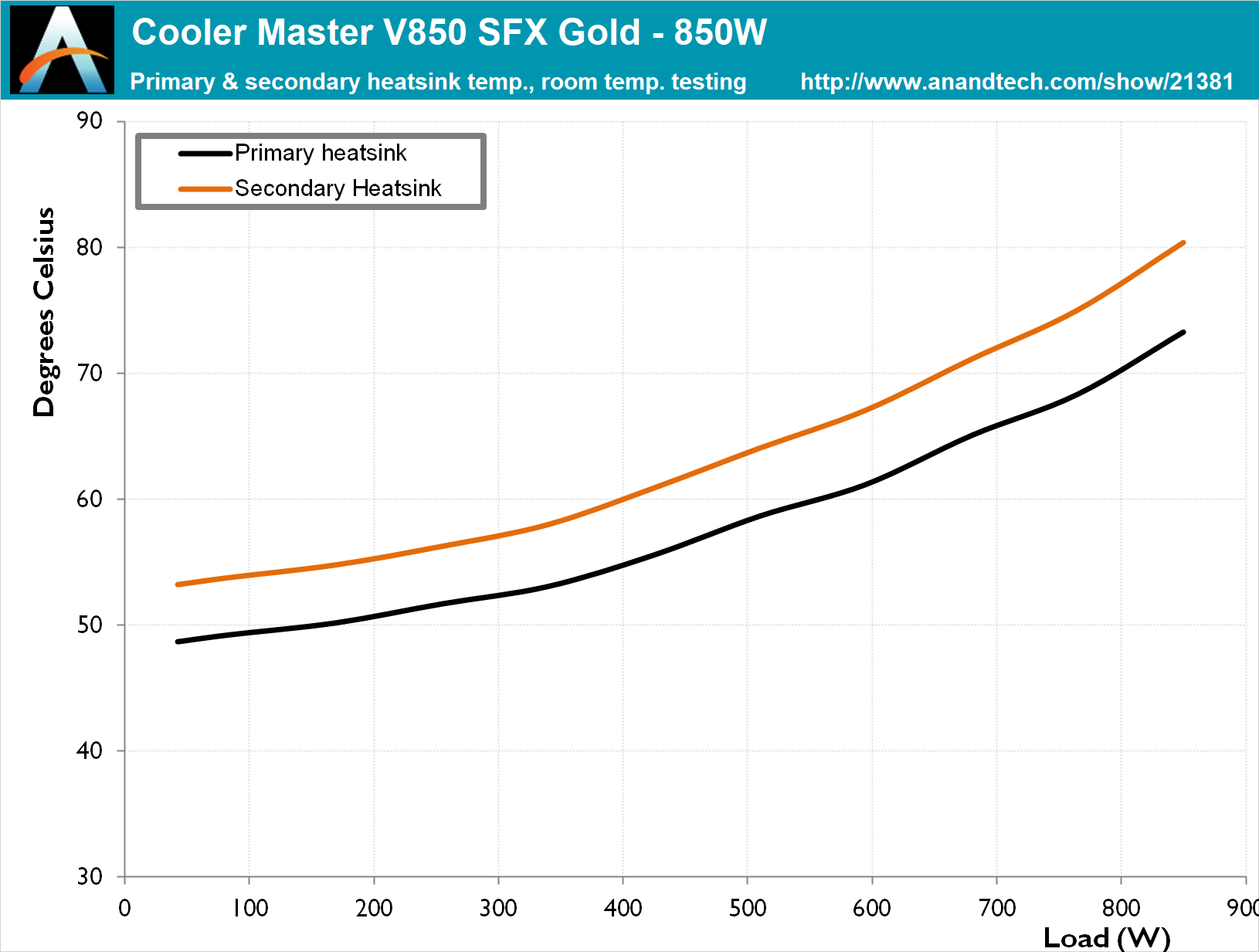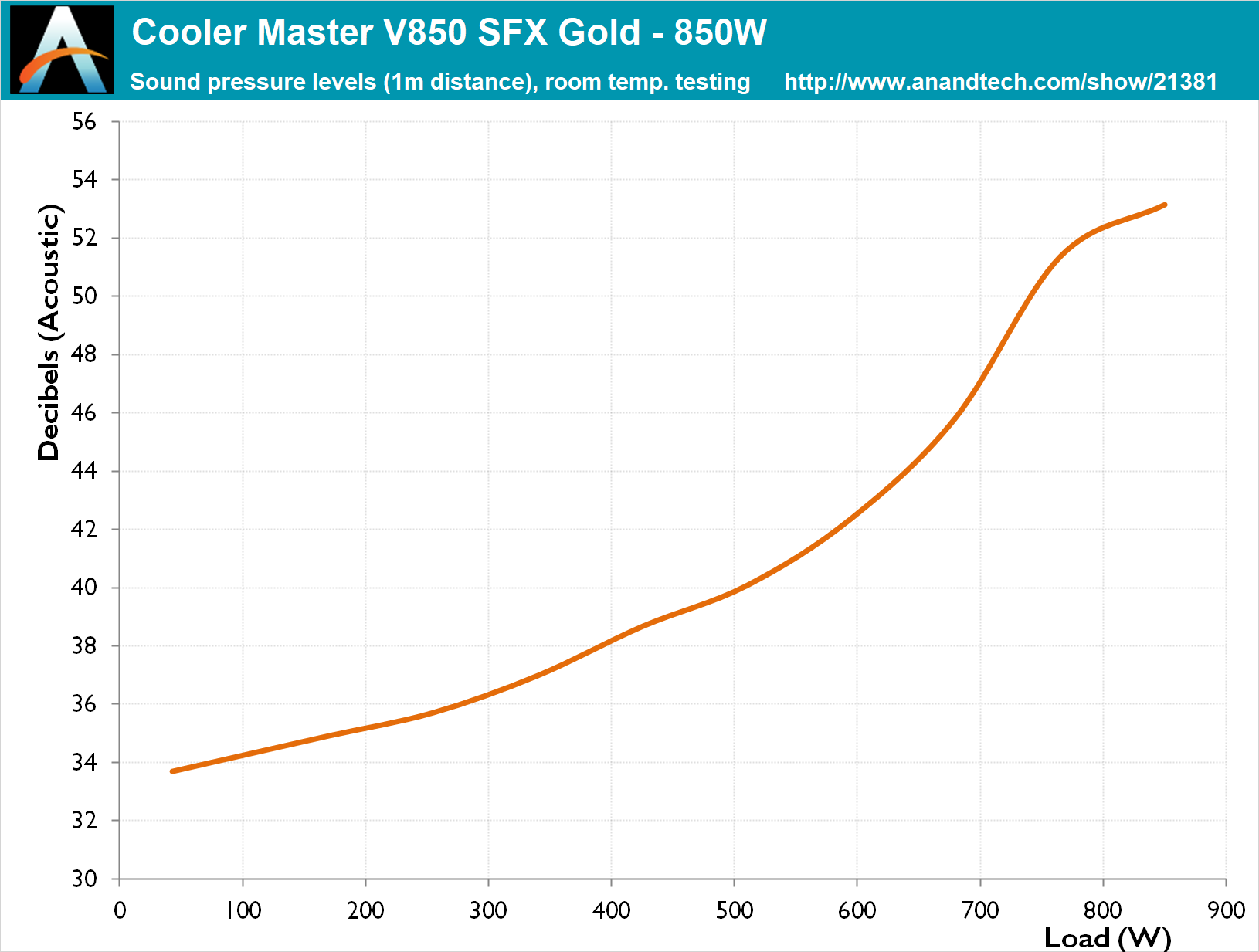The Cooler Master V850 SFX Gold ATX 3.0 PSU Review: Small Scale
by E. Fylladitakis on June 20, 2024 11:00 AM EST- Posted in
- Cases/Cooling/PSUs
- PSUs
- Cooler Master
- 80Plus Gold
- SFX
Cold Test Results (~25°C Ambient Temperature)
For the testing of PSUs, we are using high precision electronic loads with a maximum power draw of 2700 Watts, a Rigol DS5042M 40 MHz oscilloscope, an Extech 380803 power analyzer, two high precision UNI-T UT-325 digital thermometers, an Extech HD600 SPL meter, a self-designed hotbox and various other bits and parts. For a thorough explanation of our testing methodology and more details on our equipment, please refer to our How We Test PSUs - 2014 Pipeline post.
The efficiency of the Cooler Master V850 SFX Gold is commendable, consistently meeting the 80Plus Gold certification standards across different voltage inputs. It achieves higher efficiency when powered via a 230V AC source, with an average efficiency of 91.6% across the nominal load range. When powered from a 115V AC source, the efficiency decreases significantly, to 89.2%, but it still remains well above the threshold required for the 80Plus Gold certification.
Despite its high efficiency, the Cooler Master V850 SFX Gold exhibits higher internal temperatures than might be expected. This is primarily due to the unit's compact and dense design, which limits its cooling capacity compared to larger ATX units. Consequently, the internal temperatures are higher than typical for power supplies with similar efficiency levels. However, these temperature levels remain within safe operational limits for the unit.
Cooler Master initially advertised this unit as having a zero-RPM fan mode, but corrected that claim a few weeks after the unit was released. The 92 mm fan begins operating as soon as the PSU is powered up, even with no load at all, although it remains relatively quiet under low load conditions. As the load increases, the fan's speed gradually escalates, becoming far louder when the load exceeds 600 Watts. Due to its very compact size and small fan, the PSU can become very loud under very high load conditions, which is expected given the challenging cooling demands of such a design.















3 Comments
View All Comments
ballsystemlord - Thursday, June 20, 2024 - link
Those figures for hot box testing are some of the worst I've ever seen since I started reading AT. That being said, the PSU really does hold up well considering the thermal stress it must be under.But those capacitors are not going to last, Japanese or otherwise, if subjected to elevated temperature environment (e.g. many of glass paneled cases).
DanNeely - Wednesday, June 26, 2024 - link
Yeah. high wattage SFX isn't an easy target, but the last 2 reviews show much better can be done. Kinda curious if the problem is smaller heat sinks or worse air flow. Whatever it was if it couldn't be fixed, Corsair should've bit the bullet with a faster and louder fan to keep thermals under control.meacupla - Sunday, June 23, 2024 - link
I have this, or one of its versions. It came with my pre-built gaming PC and it is very loud.The fan doesn't ramp down after the PSU warms up from a 400~500W load from gaming. IDK if my version is an older one (because I don't have the box), but I need to power cycle to get the fan noise to reset.
I don't want to throw money at it to replace it. In the end, it's a gaming PC so I can live it being loud while gaming, but I would use a Corsair or Silverstone, given the choice.